
Sex Determination | Genetic Disorders
Subscribe to Never Miss an Important Update! Assured Discounts on New Products!
Must Join PMF IAS Telegram Channel & PMF IAS History Telegram Channel
Sex Determination, Genetic Disorders – Pedigree Analysis, Mutation, Mendelian Disorders: Haemophilia, Sickle-cell anaemia, Phenylketonuria. Chromosomal disorders: Down’s Syndrome, Klinefelter’s Syndrome, Turner’s Syndrome.
Source|Credits|Picture Credits: NCERT Science Textbooks Class 6-12.
Basics:
- Nucleic acids – DNA and RNA | Recombinant DNA
- Mitosis | Cell Cycle | Cell Division
- Meiosis | Mitosis – Meiosis Comparison
- Inheritance – Mendel’s Laws of Inheritance
- Chromosomal Theory | Human Genome Project
Sex Determination
- Henking (1891) could trace a specific nuclear structure all through spermatogenesis in a few insects, and it was also observed by him that 50 per cent of the sperm received this structure after spermatogenesis, whereas the other 50 per cent sperm did not receive it.
- Henking gave a name to this structure as the X body but he could not explain its significance.
- Further investigations by other scientists led to the conclusion that the ‘X body’ of Henking was in fact a chromosome and that is why it was given the name X-chromosome.
- It was also observed that in a large number of insects the mechanism of sex determination is of the XO type, i.e., all eggs bear an additional X-chromosome besides the other chromosomes (autosomes). On the other hand, some of the sperms bear the X-chromosome whereas some do not.
- Eggs fertilized by sperm having an X-chromosome become females and, those fertilized by sperms that do not have an X-chromosome become males.
- Due to the involvement of the X-chromosome in the determination of sex, it was designated to be the sex chromosome, and the rest of the chromosomes were named as autosomes.
- Grasshopper is an example of XO type of sex determination in which the males have only one X-chromosome besides the autosomes, whereas females have a pair of X-chromosomes.
- These observations led to the investigation of a number of species to understand the mechanism of sex determination.
- In a number of other insects and mammals including man, XY type of sex determination is seen where both male and female have same number of chromosomes.
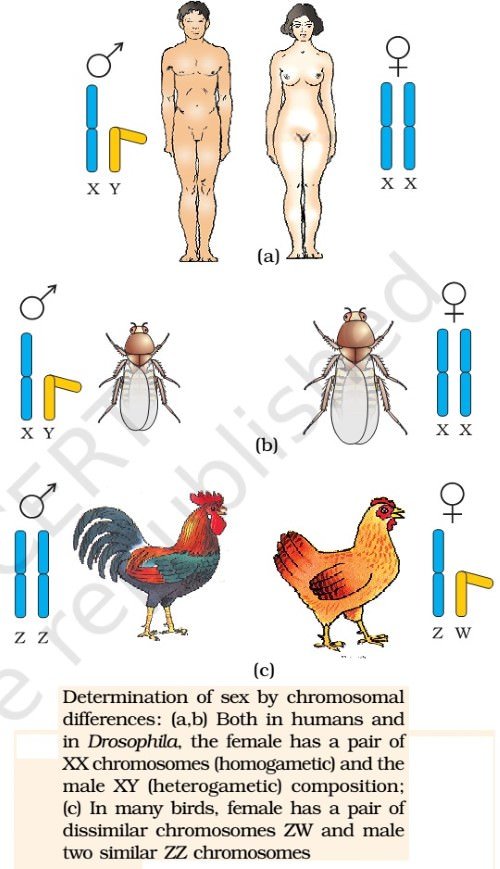
- Among the males an X-chromosome is present but its counterpart is distinctly smaller and called the Y-chromosome. Females, however, have a pair of X-chromosomes.
- Both males and females bear same number of autosomes. Hence, the males have autosomes plus XY, while female have autosomes plus XX.
[one pair of sex chromosome (XX or XY) + 22 pairs of autosomes == total 23 pairs of chromosomes in a human cell nucleus]
- In human beings and in Drosophila the males have one X and one Y chromosome, whereas females have a pair of X-chromosomes besides autosomes.
- In the above description you have studied about two types of sex determining mechanisms, i.e., XO type and XY type. But in both cases males produce two different types of gametes, (a) either with or without X-chromosome or (b) some gametes with X-chromosome and some with Y-chromosome. Such types of sex determination mechanism is designated to be the example of male heterogamety.
- In some other organisms, e.g., birds, a different mechanism of sex determination is observed. In this case the total number of chromosome is same in both males and females. But two different types of gametes in terms of the sex chromosomes, are produced by females, i.e., female heterogamety.
- In order to have a distinction with the mechanism of sex determination described earlier, the two different sex chromosomes of a female bird has been designated to be the Z and W chromosomes. In these organisms the females have one Z and one W chromosome, whereas males have a pair of Z-chromosomes besides the autosomes.
Sex Determination in Humans
- It has already been mentioned that the sex determining mechanism in case of humans is XY type. Out of 23 pairs of chromosomes present, 22 pairs are exactly same in both males and females; these are the autosomes.
- A pair of X-chromosomes are present in the female, whereas the presence of an X and Y chromosome are determinant of the male characteristic.
- During spermatogenesis among males, two types of gametes are produced. 50 per cent of the total sperm produced carry the X-chromosome and the rest 50 per cent has Y-chromosome besides the autosomes.
- Females, however, produce only one type of ovum with an X-chromosome. There is an equal probability of fertilization of the ovum with the sperm carrying either X or Y chromosome.
- In case the ovum fertilizes with a sperm carrying X-chromosome the zygote develops into a female (XX) and the fertilization of ovum with Y-chromosome carrying sperm results into a male offspring.
- Thus, it is evident that it is the genetic makeup of the sperm that determines the sex of the child. It is also evident that in each pregnancy there is always 50 per cent probability of either a male or a female child.
- It is unfortunate that in our society women are blamed for giving birth to female children and have been ostracized and ill-treated because of this false notion.
Genetic Disorders
Pedigree Analysis
- The idea that disorders are inherited has been prevailing in the human society since long. This was based on the heritability of certain characteristic features in families.
- After the rediscovery of Mendel’s work the practice of analyzing inheritance pattern of traits in human beings began.
- Since it is evident that control crosses that can be performed in pea plant or some other organisms, are not possible in case of human beings, study of the family history about inheritance of a particular trait provides an alternative.
- Such an analysis of traits in a several of generations of a family is called the pedigree analysis.
- In the pedigree analysis the inheritance of a particular trait is represented in the family tree over generations.
- In human genetics, pedigree study provides a strong tool, which is utilized to trace the inheritance of a specific trait, abnormality or disease.
- Each and every feature in any organism is controlled by one or the other gene located on the DNA present in the chromosome. DNA is the carrier of genetic information. It is hence transmitted from one generation to the other without any change or alteration.
- However, changes or alteration do take place occasionally. Such an alteration or change in the genetic material is referred to as mutation.
- A number of disorders in human beings have been found to be associated with the inheritance of changed or altered genes or chromosomes.
Mutation
- Mutation is a phenomenon which results in alteration of DNA sequences and consequently results in changes in the genotype and the phenotype of an organism.
- In addition to recombination, mutation is another phenomenon that leads to variation in DNA.
- DNA helix runs continuously from one end to the other in each chromatid, in a highly supercoiled form. Therefore loss (deletions) or gain (insertion/duplication) of a segment of DNA, result in alteration in chromosomes.
- Since genes are known to be located on chromosomes, alteration in chromosomes results in abnormalities or aberrations. Chromosomal aberrations are commonly observed in cancer cells.
- In addition to the above, mutation also arise due to change in a single base pair of DNA. This is known as point mutation. A classic example of such a mutation is sickle cell anemia.
- Deletions and insertions of base pairs of DNA, causes frame-shift mutations.
- There are many chemical and physical factors that induce mutations. These are referred to as mutagens. UV radiations can cause mutations in organisms – it is a mutagen.
Mendelian Disorders
- Broadly, genetic disorders may be grouped into two categories – Mendelian disorders and Chromosomal disorders.
- Mendelian disorders are mainly determined by alteration or mutation in the single gene. These disorders are transmitted to the offspring on the same lines as we have studied in the principle of inheritance.
- The pattern of inheritance of such Mendelian disorders can be traced in a family by the pedigree analysis.
- Most common and prevalent Mendelian disorders are Haemophilia, Cystic fibrosis, Sickle-cell anaemia, Colour blindness, Phenylketonuria, Thalassemia, etc.
- It is important to mention here that such Mendelian disorders may be dominant or recessive.
- By pedigree analysis one can easily understand whether the trait in question is dominant or recessive.
- Similarly, the trait may also be linked to the sex chromosome as in case of haemophilia.
- It is evident that this X-linked recessive trait shows transmission from carrier female to male progeny.
Haemophilia
- This sex linked recessive disease, which shows its transmission from unaffected carrier female to some of the male progeny has been widely studied.
- In this disease, a single protein that is a part of the cascade of proteins involved in the clotting of blood is affected. Due to this, in an affected individual a simple cut will result in non-stop bleeding.
- The heterozygous female (carrier) for haemophilia may transmit the disease to sons.
- The possibility of a female becoming a haemophilic is extremely rare because mother of such a female has to be at least carrier and the father should be haemophilic (unviable in the later stage of life).
- The family pedigree of Queen Victoria shows a number of haemophilic descendents as she was a carrier of the disease.
Sickle-Cell Anaemia
- This is an autosome linked recessive trait that can be transmitted from parents to the offspring when both the partners are carrier for the gene (or heterozygous). The disease is controlled by a single pair of allele, HbA and HbS.
- Out of the three possible genotypes only homozygous individuals for HbS (HbSHbS) show the diseased phenotype.
- Heterozygous (HbAHbS) individuals appear apparently unaffected but they are carrier of the disease as there is 50 per cent probability of transmission of the mutant gene to the progeny, thus exhibiting sickle-cell trait.
- The defect is caused by the substitution of Glutamic acid (Glu) by Valine (Val) at the sixth position of the beta globin chain of the haemoglobin molecule.
- The substitution of amino acid in the globin protein results due to the single base substitution at the sixth codon of the beta globin gene from GAG to GUG.
- The mutant haemoglobin molecule undergoes polymerization under low oxygen tension causing the change in the shape of the RBC from biconcave disc to elongated sickle like structure.
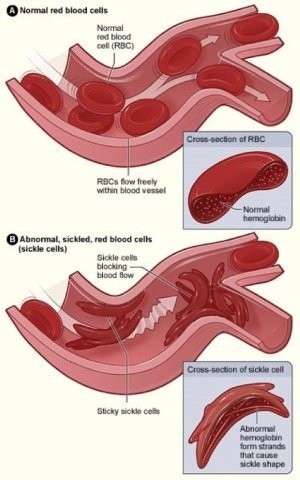
Pic Credits Wikipedia
Phenylketonuria
- This inborn error of metabolism is also inherited as the autosomal recessive trait.
- The affected individual lacks an enzyme that converts the amino acid phenylalanine into tyrosine.
- As a result of this phenylalanine is accumulated and converted into phenylpyruvic acid and other derivatives.
- Accumulation of these in brain results in mental retardation. These are also excreted through urine because of its poor absorption by kidney.
Chromosomal Disorders
- The chromosomal disorders on the other hand are caused due to absence or excess or abnormal arrangement of one or more sex chromosomes.
- Failure of segregation of chromatids during cell division cycle results in the gain or loss of a chromosome(s), called aneuploidy.
- For example, Down’s syndrome results in the gain of extra copy of chromosome 21.
- Similarly, Turner’s syndrome results due to loss of an X chromosome in human females.
- Failure of cytokinesis after telophase stage of cell division results in an increase in a whole set of chromosomes in an organism and, this phenomenon is known as polyploidy. This condition is often seen in plants.
- The total number of chromosomes in a normal human cell is 46 (23 pairs). Out of these 22 pairs are autosomes and one pair of chromosomes are sex chromosome.
- Sometimes, though rarely, either an additional copy of a chromosome may be included in an individual or an individual may lack one of any one pair of chromosomes. These situations are known as trisomy or monosomy of a chromosome, respectively.
- Such a situation leads to very serious consequences in the individual. Down’s syndrome, Turner’s syndrome, Klinefelter’s syndrome are common examples of chromosomal disorders.
Down’s Syndrome
- The cause of this genetic disorder is the presence of an additional copy of the chromosome number 21 (trisomy of 21). This disorder was first described by Langdon Down (1866).
- The affected individual is short statured with small round head, furrowed tongue and partially open mouth. Palm is broad with characteristic palm crease. Physical, psychomotor and mental development is retarded.
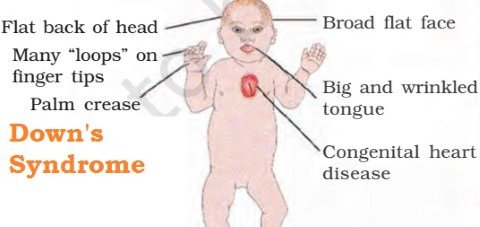
Klinefelter’s Syndrome
- This genetic disorder is also caused due to the presence of an additional copy of X-chromosome resulting into a karyotype of 47, XXY.
- Such an individual has overall masculine development, however, the feminine development (development of breast, i.e., Gynaecomastia) is also expressed. Such individuals are sterile.
Turner’s Syndrome
- Such a disorder is caused due to the absence of one of the X chromosomes, i.e., 45 with X0. Such females are sterile as ovaries are rudimentary besides other features including lack of other secondary sexual characters.
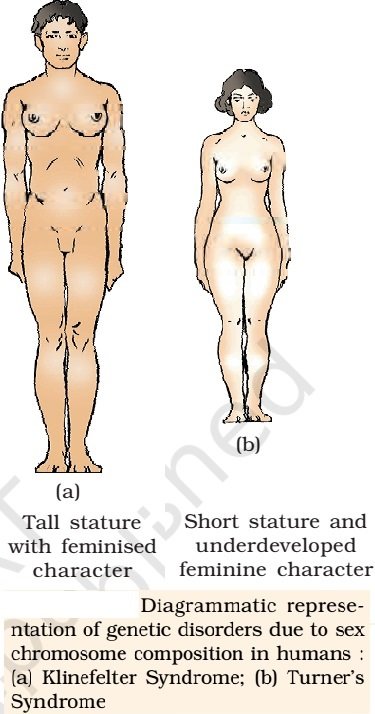
Summary
- After knowing that the genes are located on the chromosomes, a good correlation was drawn between Mendel’s laws: segregation and assortment of chromosomes during meiosis. The Mendel’s laws were extended in the form of ‘Chromosomal Theory of Inheritance’.
- Later, it was found that Mendel’s law of independent assortment does not hold true for the genes that were located on the same chromosomes. These genes were called as ‘linked genes’.
- Closely located genes assorted together, and distantly located genes, due to recombination, assorted independently. Linkage maps, therefore, corresponded to arrangement of genes on a chromosome.
- Many genes were linked to sexes also, and called as sex-linked genes. The two sexes (male and female) were found to have a set of chromosomes which were common, and another set which was different.
- The chromosomes which were different in two sexes were named as sex chromosomes. The remaining set was named as autosomes. In humans, a normal female has 22 pairs of autosomes and a pair of sex chromosomes (XX).
- A male has 22 pairs of autosomes and a pair of sex chromosome as XY. In chicken, sex chromosomes in male are ZZ, and in females are ZW.
- Mutation is defined as change in the genetic material. A point mutation is a change of a single base pair in DNA.
- Sickle-cell anemia is caused due to change of one base in the gene coding for beta-chain of hemoglobin.
- Inheritable mutations can be studied by generating a pedigree of a family.
- Some mutations involve changes in whole set of chromosomes (polyploidy) or change in a subset of chromosome number (aneuploidy). This helped in understanding the mutational basis of genetic disorders.
- Down’s syndrome is due to trisomy of chromosome 21, where there is an extra copy of chromosome 21 and consequently the total number of chromosome becomes 47.
- In Turner’s syndrome, one X chromosome is missing and the sex chromosome is as XO, and in Klinefelter’s syndrome, the condition is XXY. These can be easily studied by analysis of Karyotypes.








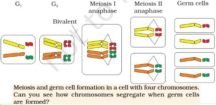
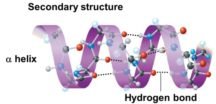

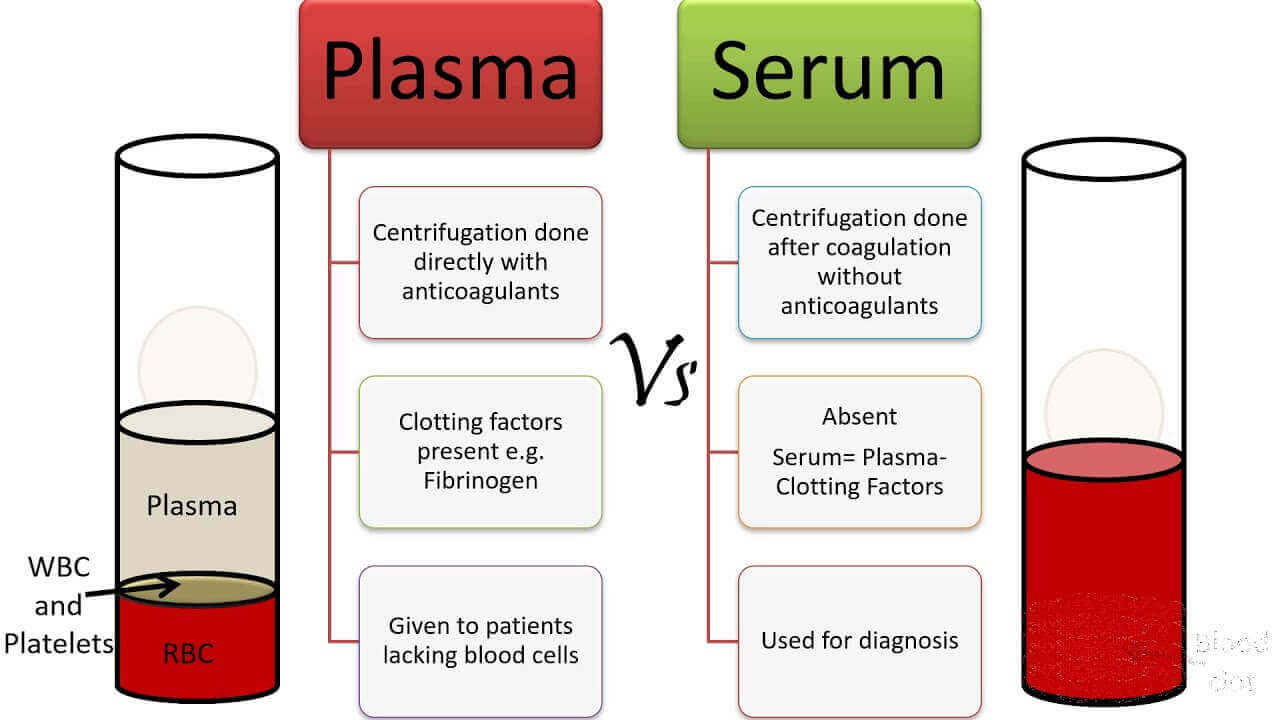





Sir..u said that women are being blamed in the society for giving birth to girls but it is due to males because of sperms carrying both x and y chromosome..no…it is false and wrong as well….. women have to be blamed as per science and it is proved scientifically…Because , the nature of egg only determines the sex and sperm has no role to play in it……Egg has to allow the sperm which carries y chromosome for a boy ….Some eggs deliberately allow only sperms with x chromosomes…examples…i read 1 incident in newspaper in Bangladesh. A man married women but she had given birth to 3 girls but the family wanted the boys . So that man married her sister and she had given birth to 3 boys…example 2. In Congo…A man married 3 females. 1 women gave birth to 4 girls and other 2 women gave birth to 2 boys each……..SO IT IS THE NATURE OF EGG THAT DETERMINES WHETHER THE SEX IS MALE OR FEMALE…MALES HAVE NO ROLE IN DETERMINATION..